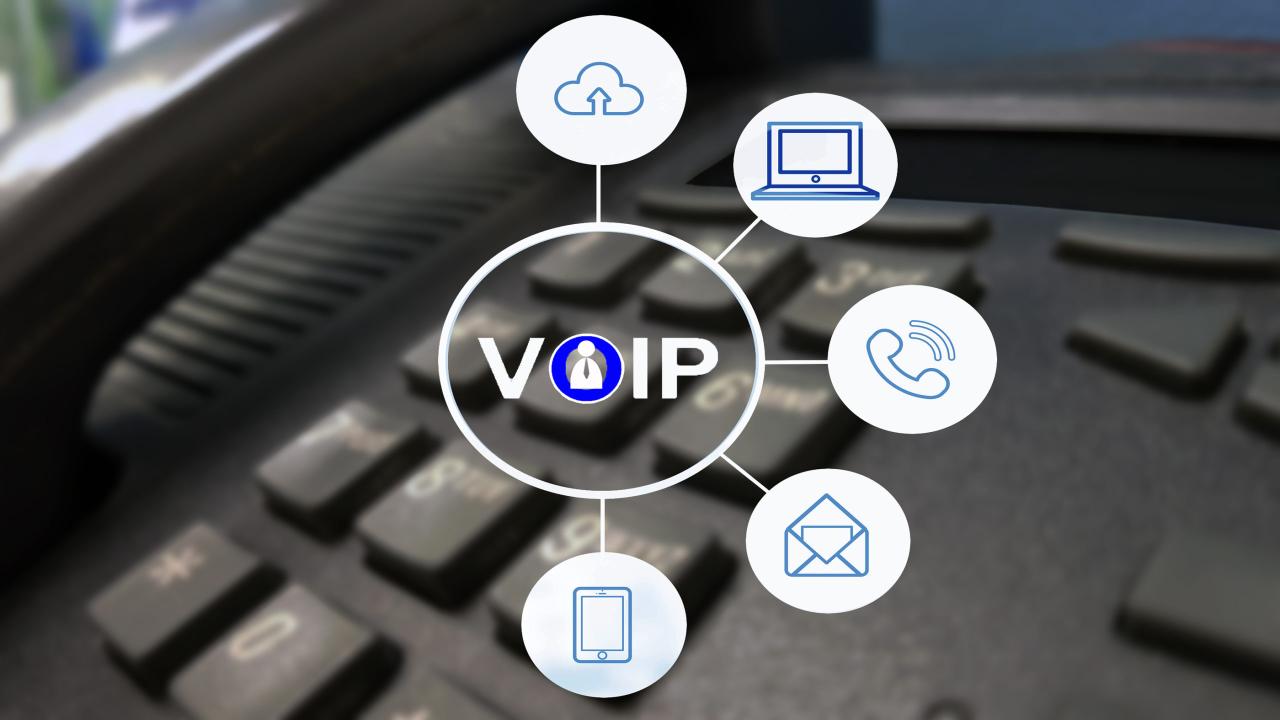Client VoIP is transforming the landscape of communication by leveraging innovative technology to enhance interactions across various sectors. Understanding the fundamental principles of VoIP technology reveals its stark contrasts with traditional telephony, highlighting how modern clients can benefit from enhanced connectivity and flexibility.
As businesses seek more efficient communication mechanisms, VoIP offers not only cost advantages but also scalability, making it a preferred choice for organizations of all sizes. The implementation of Client VoIP solutions promises improved collaboration, responsiveness, and overall productivity, opening new doors for clients in diverse industries.
Understanding Client VoIP Technology
Voice over Internet Protocol (VoIP) technology has revolutionized the way businesses and individuals communicate. By converting voice into digital signals, VoIP enables users to make calls over the internet instead of traditional telephone lines. This innovation not only enhances communication efficiency but also significantly reduces costs for users across various sectors.VoIP operates on fundamental principles that distinguish it from traditional telephony.
It digitizes voice signals, compresses them, and transmits them over the internet in packets. The technology leverages existing internet infrastructure, making it scalable and adaptable to various communication needs. In contrast, traditional telephony relies on circuit-switched networks, where a dedicated line remains open for the duration of a call, often leading to inefficiencies and higher costs.
Differences Between Traditional Telephony and VoIP
The distinctions between traditional telephony and VoIP are crucial for understanding the benefits of adopting VoIP. While both methods facilitate communication, they operate on fundamentally different systems:
- Infrastructure: Traditional telephony uses copper wires and switches for call routing, whereas VoIP utilizes internet protocols and broadband connections, enabling more flexible network use.
- Cost Efficiency: VoIP generally offers lower calling rates, especially for long-distance calls, as it bypasses the traditional phone network charges.
- Features: VoIP services often include advanced features such as video conferencing, voicemail-to-email, and call forwarding, which may incur additional costs in traditional systems.
- Scalability: VoIP systems can easily scale with business growth, allowing the addition or removal of lines without significant infrastructure investment.
VoIP Enhancements in Various Client Sectors
The implementation of VoIP technology offers significant communication enhancements across diverse sectors. Businesses, healthcare providers, and educational institutions have all benefited from the flexible and robust features of VoIP systems.In the business sector, VoIP facilitates seamless communication among teams and clients. For instance, companies can integrate VoIP with customer relationship management (CRM) systems to improve customer interactions. The ability to conduct conference calls and video meetings enhances collaboration and decision-making processes.Healthcare providers utilize VoIP to ensure timely communication among healthcare professionals, patients, and administrative staff.
This technology supports telemedicine services, allowing doctors to consult with patients remotely, which has become increasingly vital in recent years. Educational institutions leverage VoIP to enhance the learning experience. Online classes and virtual meetings allow students and teachers to interact in real-time, fostering engagement and collaboration.
VoIP technology is instrumental in transforming communication methodologies across various sectors, driving efficiency and cost-effectiveness.
The versatility of VoIP is demonstrated through its adaptability to different environments, illustrating its vital role in modern communication solutions.
Benefits of Implementing Client VoIP Solutions

The implementation of Client VoIP solutions presents numerous advantages for businesses seeking to enhance their communication systems. With a focus on cost efficiency, improved communication, and scalability, VoIP technology has become a valuable asset for organizations of all sizes.
Cost Advantages of Using VoIP for Clients
One of the primary benefits of adopting VoIP technology is the significant reduction in communication costs. Traditional telephone systems often incur high monthly fees, especially for long-distance calls. In contrast, VoIP utilizes the internet for voice transmission, leading to lower operational expenses.
When looking for effective VoIP solutions, it is essential to consider various platforms available today. For instance, xlite voip provides an intuitive experience for users, making it a popular choice for both individuals and businesses. Additionally, exploring elastix voip can reveal a comprehensive system that supports a wide range of telecommunication needs, ensuring seamless connectivity and communication.
VoIP solutions can reduce call costs by up to 50-70% compared to traditional phone lines.
For example, a small business that primarily communicates with clients overseas can experience substantial savings by switching to VoIP, allowing them to allocate funds elsewhere, such as in marketing or product development. Additionally, VoIP services often come with bundled features, such as voicemail to email, call forwarding, and conference calling, which might otherwise incur extra fees with traditional services.
Improved Communication Efficiency with VoIP
VoIP technology enhances communication efficiency through features that streamline interactions and increase productivity. With functionalities such as video conferencing, instant messaging, and integration with customer relationship management (CRM) systems, VoIP facilitates more effective collaboration among team members and clients. For instance, a company may utilize VoIP to host virtual meetings with clients across different time zones, eliminating the need for travel and expediting decision-making processes.
This immediacy leads to faster project turnaround times and enhances overall client satisfaction.
Scalability of VoIP Solutions for Growing Businesses
As businesses expand, their communication needs evolve. VoIP solutions offer remarkable scalability, allowing organizations to add or remove lines and features with ease. This flexibility is particularly advantageous for businesses experiencing growth or fluctuating communication demands. To illustrate, a start-up may begin with a small VoIP package, and as they grow, they can seamlessly integrate additional lines, enhanced features, or even international calling capabilities without the need for extensive infrastructure changes.
In today’s interconnected world, utilizing advanced communication technologies is crucial. One such solution is elastix voip , which offers a robust platform for voice over IP services. This system not only enhances communication efficiency but also integrates various features that cater to business needs. As you explore these options, you might also consider xlite voip , known for its user-friendly interface and reliability in making calls over the internet.
This adaptability not only saves time but also ensures that communication systems remain aligned with business objectives.
Best Practices for Client VoIP Deployment
Successful deployment of Client VoIP solutions requires careful planning and execution to ensure that the technology integrates smoothly into existing systems and meets the communication needs of the organization. Adhering to best practices can enhance the performance and reliability of VoIP services while addressing any inherent challenges.
Steps for Successful VoIP Implementation
A comprehensive approach to VoIP implementation encompasses several key steps that can significantly impact the effectiveness of the deployment. These steps include:
- Conducting a Needs Assessment: Understanding the specific communication needs of the organization is crucial. This step involves evaluating existing systems, identifying gaps, and determining the desired functionalities of the VoIP solution.
- Choosing the Right Provider: Selecting a reputable VoIP service provider is vital. Factors to consider include service quality, support options, scalability, and pricing models. It is advisable to review customer testimonials and case studies.
- Network Readiness Evaluation: Assessing the current network infrastructure for compatibility with VoIP technology is essential. This includes checking bandwidth capabilities, router configurations, and ensuring Quality of Service (QoS) settings are applied.
- Pilot Testing: Before full-scale deployment, conducting a pilot test allows organizations to evaluate the VoIP system’s performance in a controlled environment, addressing any issues before a complete rollout.
- Training and Support: Providing training for users ensures that they are comfortable and proficient with the new technology. Ongoing support should also be made available to address inquiries and troubleshoot problems.
Potential Challenges During Setup and Usage
While deploying a VoIP system can have numerous advantages, certain challenges may arise that can affect its performance and user experience. Common challenges include:
- Network Congestion: Inadequate bandwidth can lead to call quality issues. It is crucial to ensure that the network can handle simultaneous calls without degradation.
- Configuration Complexity: Misconfigurations can lead to problems such as dropped calls or poor quality. Proper configuration protocols should be adhered to during setup.
- Security Vulnerabilities: VoIP systems can be susceptible to attacks such as eavesdropping and denial-of-service. Implementing robust security measures, such as encryption and firewalls, is essential.
- User Adaptation: Resistance to change from traditional systems to VoIP can hinder user adoption. Effective training and communication about the benefits are necessary to facilitate this transition.
Methods to Ensure Optimal VoIP Performance and Reliability
To achieve optimal performance and reliability of the VoIP system, various methods can be employed. Key strategies include:
- Monitoring Network Performance: Regularly monitoring network performance can help identify potential issues before they impact the VoIP service. Tools that provide real-time analytics can be beneficial.
- Implementing Quality of Service (QoS): QoS settings prioritize VoIP traffic on the network, ensuring that voice calls receive the necessary bandwidth, thereby improving call quality.
- Regular Updates and Maintenance: Keeping the VoIP systems updated with the latest software and firmware can enhance security and performance. Scheduled maintenance can prevent system failures.
- Backup Systems: Establishing backup systems and failover protocols ensures that communication remains uninterrupted during outages or system failures. This includes alternate routing or redundant systems.
Future Trends in Client VoIP Services

As technology continues to advance at a rapid pace, the landscape of Voice over Internet Protocol (VoIP) services is evolving to meet the demands of a changing market. The future of Client VoIP services promises to be shaped by several emerging technologies, shifts in client needs, and enhanced security measures to protect communications. This discussion delves into these anticipated trends and their implications for businesses and consumers alike.
Emerging Technologies Influencing VoIP
Several emerging technologies are poised to influence the future of Client VoIP services significantly. These advancements include:
- Artificial Intelligence (AI): AI will enhance VoIP systems by providing predictive analytics for call management, intelligent routing, and automated customer service through chatbots.
- 5G Technology: The rollout of 5G networks is set to improve the speed and reliability of VoIP connections, allowing for higher quality voice calls and enhanced multimedia sharing capabilities.
- Internet of Things (IoT): Integration of IoT with VoIP services can enable seamless communication between devices, facilitating automated workflows and smarter business operations.
- Blockchain Technology: Blockchain may provide decentralized solutions for secure communications and transactions, enhancing transparency and user trust in VoIP systems.
Anticipated Future Client Needs, Client voip
As businesses and consumers become increasingly reliant on digital communication, the expectations surrounding VoIP services are evolving. Key anticipated needs include:
- Enhanced Integration: Clients will demand more robust integration between VoIP services and other business applications, such as customer relationship management (CRM) systems, ensuring streamlined communication processes.
- Mobile Accessibility: There is a growing expectation for and adoption of mobile-friendly VoIP solutions that can facilitate communication from anywhere, empowering remote and hybrid work environments.
- Scalability: VoIP solutions must offer greater scalability to accommodate the dynamic needs of businesses as they grow or adapt to changing market conditions.
- Customizable Features: Clients will seek more customizable VoIP services that can be tailored to specific business requirements, enhancing usability and effectiveness.
Developments in VoIP Security Measures
The increasing prevalence of cyber threats necessitates that VoIP services evolve to enhance security protocols. Future developments in VoIP security are expected to include:
- Advanced Encryption Techniques: Stronger encryption protocols will be implemented to safeguard voice data during transmission, making it difficult for unauthorized parties to access sensitive information.
- AI-Powered Security Solutions: AI will play a critical role in identifying and mitigating potential security threats in real-time, thereby enhancing the overall security posture of VoIP systems.
- Two-Factor Authentication (2FA): The adoption of 2FA will become increasingly common, providing an additional layer of security for user accounts and preventing unauthorized access.
- Compliance with Data Protection Regulations: VoIP providers will need to ensure that their services comply with evolving data protection regulations, such as GDPR, to safeguard client information and maintain trust.